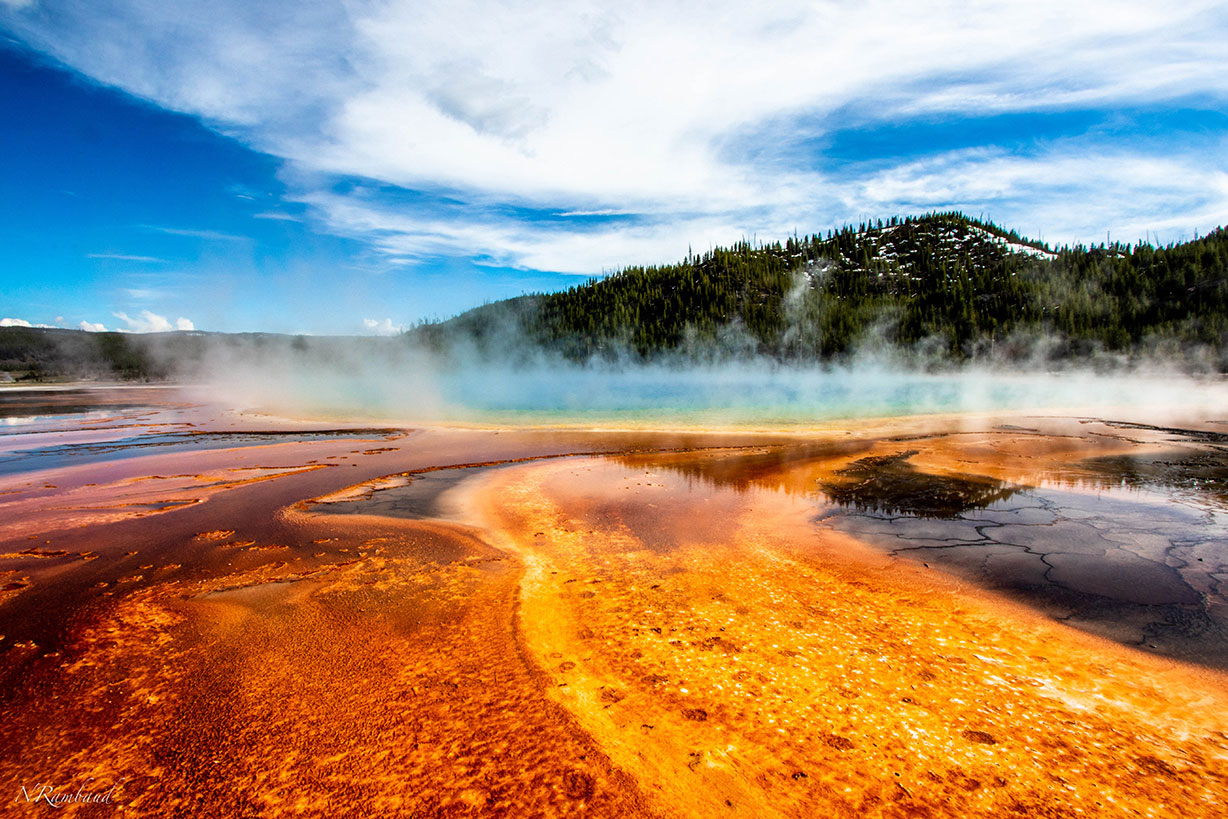Spanning over the three states of Wyoming, Montana and Idaho, Yellowstone is one of the world’s most impressive, and famous, national parks. But what does this magnificent landscape have to offer? We’ll run you through our top 10 facts about Yellowstone National Park in our guide, so you can make the most of your volcanic adventure. Find out about Yellowstone’s wildlife, geology, history and more below.
Interesting Facts About Yellowstone National Park
1. Yellowstone Wildlife Scene Is Home To 67 Different Mammals
The Yellowstone National Park provides a home for a wide range of animals, namely grizzly bears, wolves, moose, elk and many more. The 67 different types of mammals that inhabit the park make it the biggest concentration of mammals in one area, in the lower 48 states in the country.
The mammal most people want to spot is the grizzly bear – albeit from a safe distance, as grizzlies can run up to speeds of 40 mph!
What’s more, the bison is often used as the face of the park, but this was not always the case. Back in 1902, bison were hunted almost to the point of extinction, leaving only 20 odd roaming free. Luckily, now the number has increased to 5,000 (when estimated in 2017).
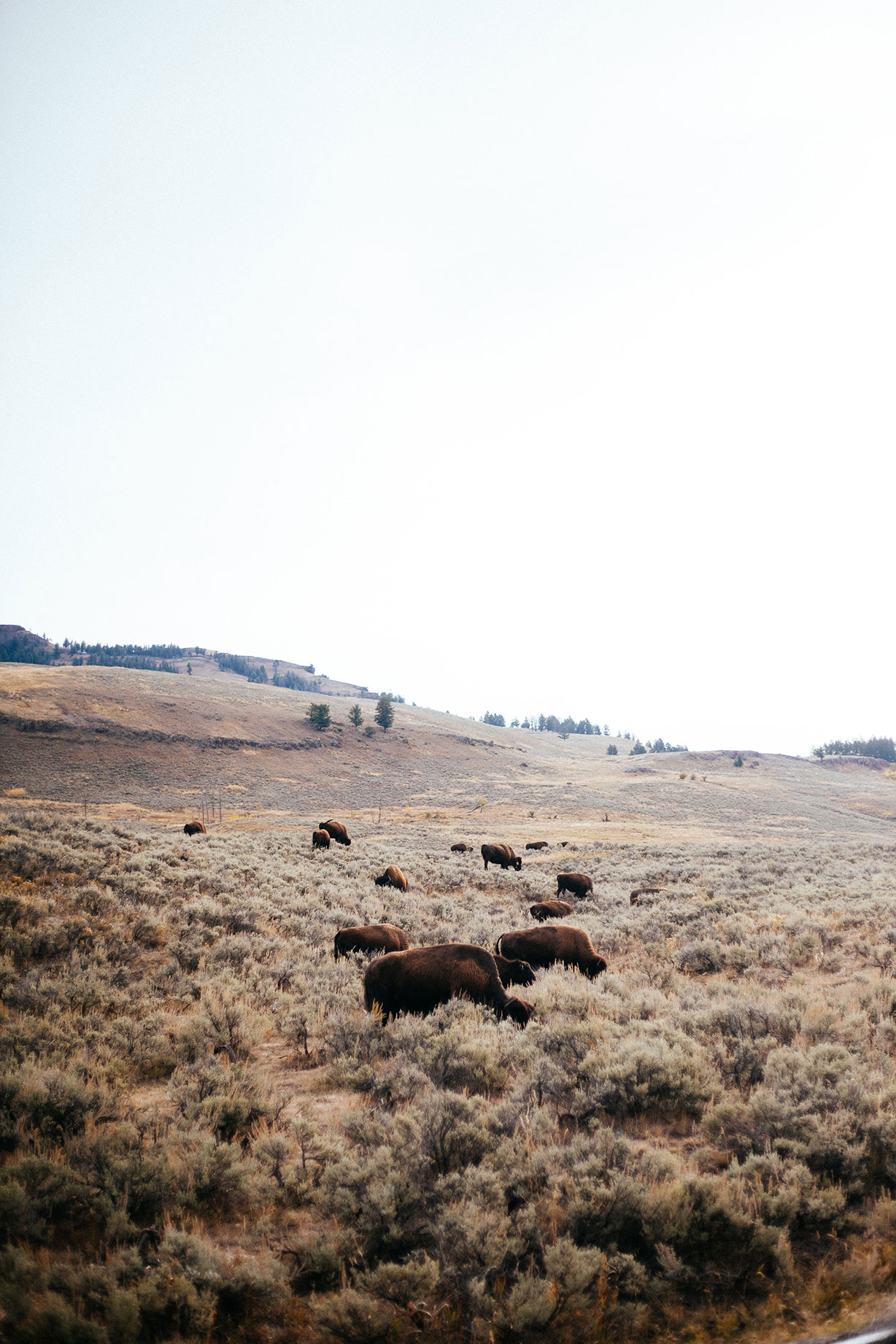
2. Yellowstone Geology Facts – The Supervolcano
If you plan on visiting the park, you might not notice any obvious volcano looming over the landscape.
However, that doesn’t mean that it isn’t there and interestingly, Yellowstone itself is in fact classed as a supervolcano. Yellowstone gained itself this title thanks to the strength of its eruptions, which have reached a magnitude of 8 on the Volcano Explosivity Index. So, why can’t you see a volcano? The truth is, it lies underneath a large mass of the park, fueling the geysers, hot springs and mud pots dotted around the park.
3. Yellowstone History – People Have Roamed The Area For Over 11,000 years
The Yellowstone history is as rich as it’s geology. Throughout history, the park was home to many tribes and hunting grounds, and also acted as a route of transportation before the Europeans arrived. Regarded as the world’s first national park, Yellowstone received its national park status back in 1872, and it’s all down to the work of Nathaniel P. Langford – the first superintendent of the park. Just over 10 years later, visitor
access became easier than ever thanks to the introduction of railroads and from then on was frequently visited by tourists from around the country.
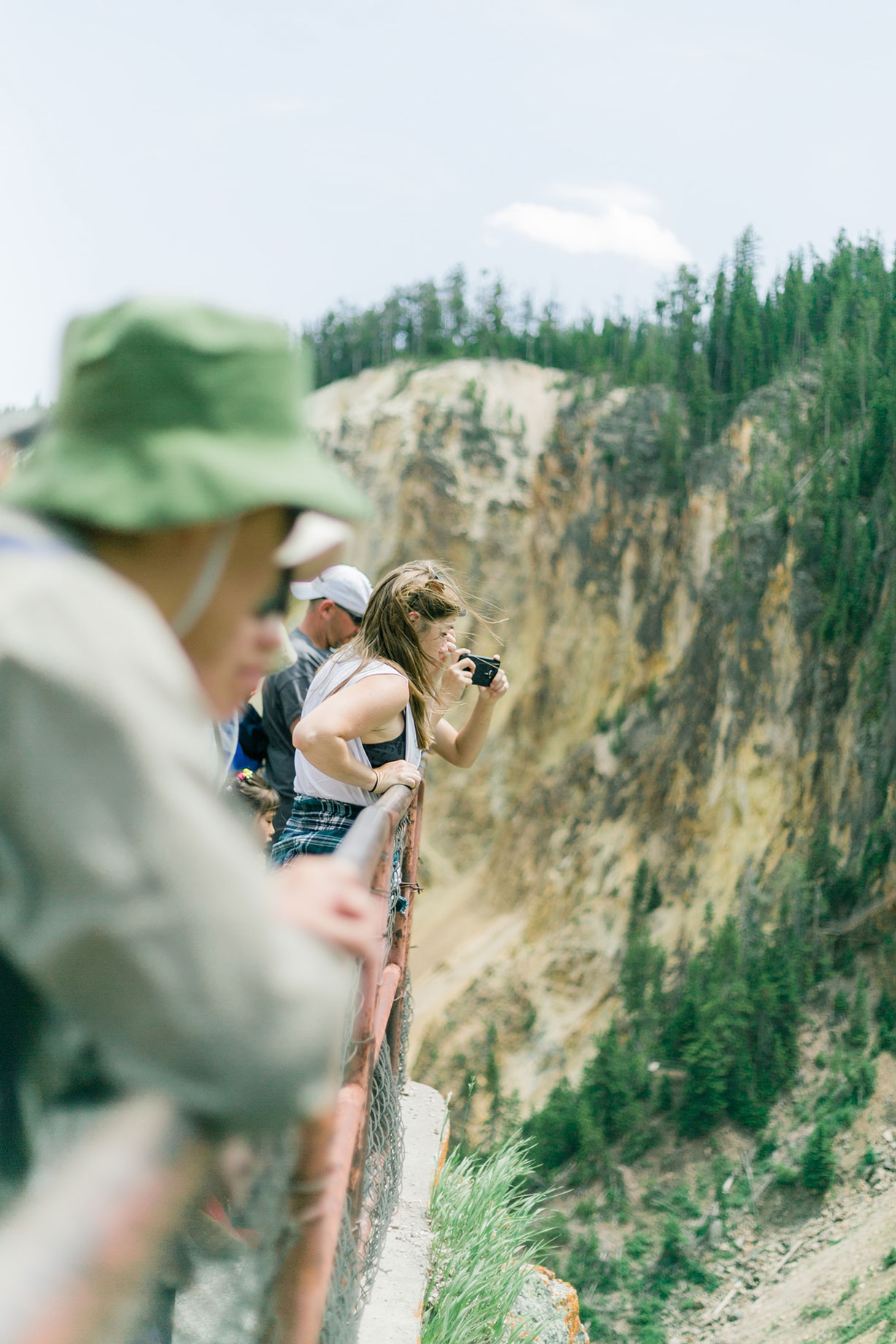
4. In 1995, Wolves Were Re-Introduced To The Site
When Yellowstone was under the management of the NPS (U.S National Park Service), the primary aim was to increase visitor numbers. And a part of this meant killing off any resident wolves to up the number of elk and deer, as this was desired by the public at the time. However, in the early 90s, a campaign to restore the gray wolf was created to help prevent the species from becoming endangered. This therefore led to the
capture of over 14 wolves from Canada who were then transported to the park – leading to an increased number of the mammals, with at least 94 wolves currently living in Yellowstone.
5. Yellowstone Lake Freezes Over Every Winter
One of the most surprising facts about Yellowstone Lake, is that it freezes over in either December or January every year. Most people wouldn’t expect this due to the volcanic activity and hot springs, but Yellowstone Lake actually remains at a very low temperature of 5°C all year round – so you won’t want to go for a dip! The survival time for remaining in the water at this temperature is estimated at around 20 – 30 minutes, which is why swimming is strictly not recommended.
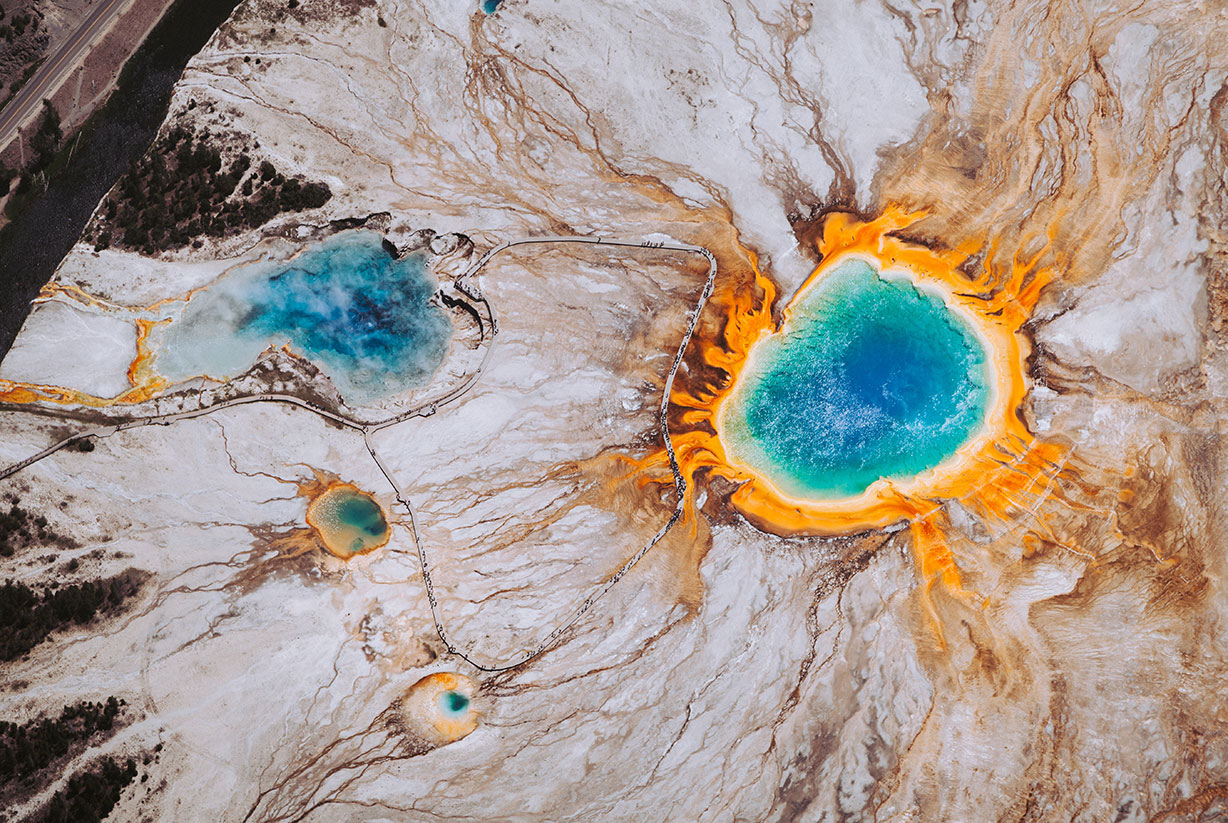
6. You’ll Find Plenty Of Trails To Hike In Yellowstone
Next up in our 10 facts about Yellowstone National Park, the abundance of thrilling hiking adventures. The park itself provides over 1,000 miles of hiking trails, so you’ll be spoilt for choice on your trip. For one of the most famous options, hike the Upper Geyser Basin Boardwalk. Along this 1.5 mile trail, you’ll likely witness 5 different geyser eruptions, including Old Faithful. And if hydrothermal reactions aren’t your thing, embark on the Grand Canyon of the Yellowstone trail. This hike offers breathtaking views of the canyon, so don’t forget to pack your camera and remember to take a pair of sturdy walking boots!
7. You Can Expect To Find More Than Just A Volcano In Yellowstone
Throughout the parks 2.2 million acres of land, you’ll find approximately 290 waterfalls for you to explore. Dotted all around the park with varying degrees of accessibility, one of the easiest waterfalls to visit is Firehole Falls. Located 30 minutes away from West Yellowstone town, you can reach this magnificent landscape via a scenic route through Firehole Canyon. The most famous however, is the Upper and Lower Yellowstone River Falls. With a dramatic drop of 308 feet, you won’t want to miss this sight.
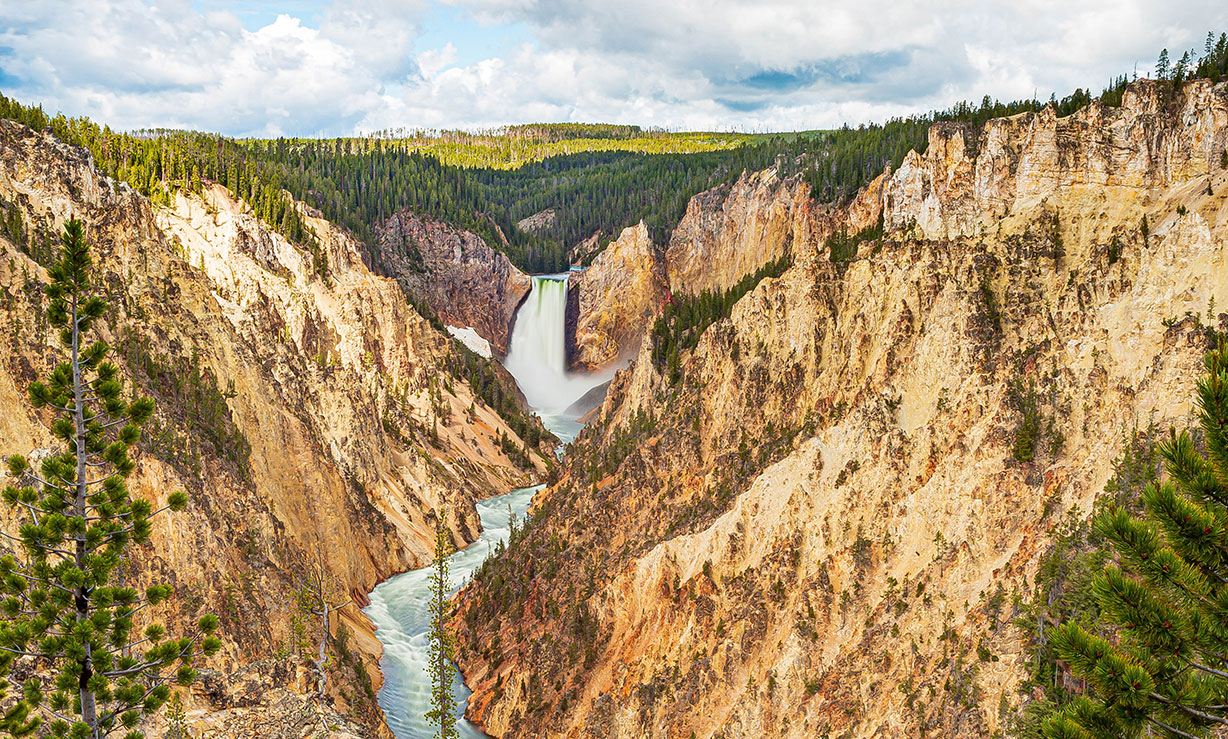
8. Old Faithful Is Less Faithful As It Used To Be
One of the best fun facts about Yellowstone comes from the famous geyser, Old Faithful. This iconic hydrothermal feature is known for spewing water 180 feet up in the air and gained its name when a group of explorers discovered that its eruptions took place roughly every hour back in 1870. However, the eruptions aren’t as regular as they used to be. Due to several earthquakes, the eruptions have slowed over time to around every hour and a half.
9. You’ll Find Half Of The World’s Hydrothermal Features At Yellowstone
The volcanic hotspot that is Yellowstone National Park is home to half of the hydrothermal features that can be found in the world. Consisting of over 10,000 of these features, you’ll find an abundance of geysers, mudpots, hot springs fumaroles and travertine terraces in the park. What’s more, a lot of these features display bright colours thanks to the thermophile microorganisms that live within them.
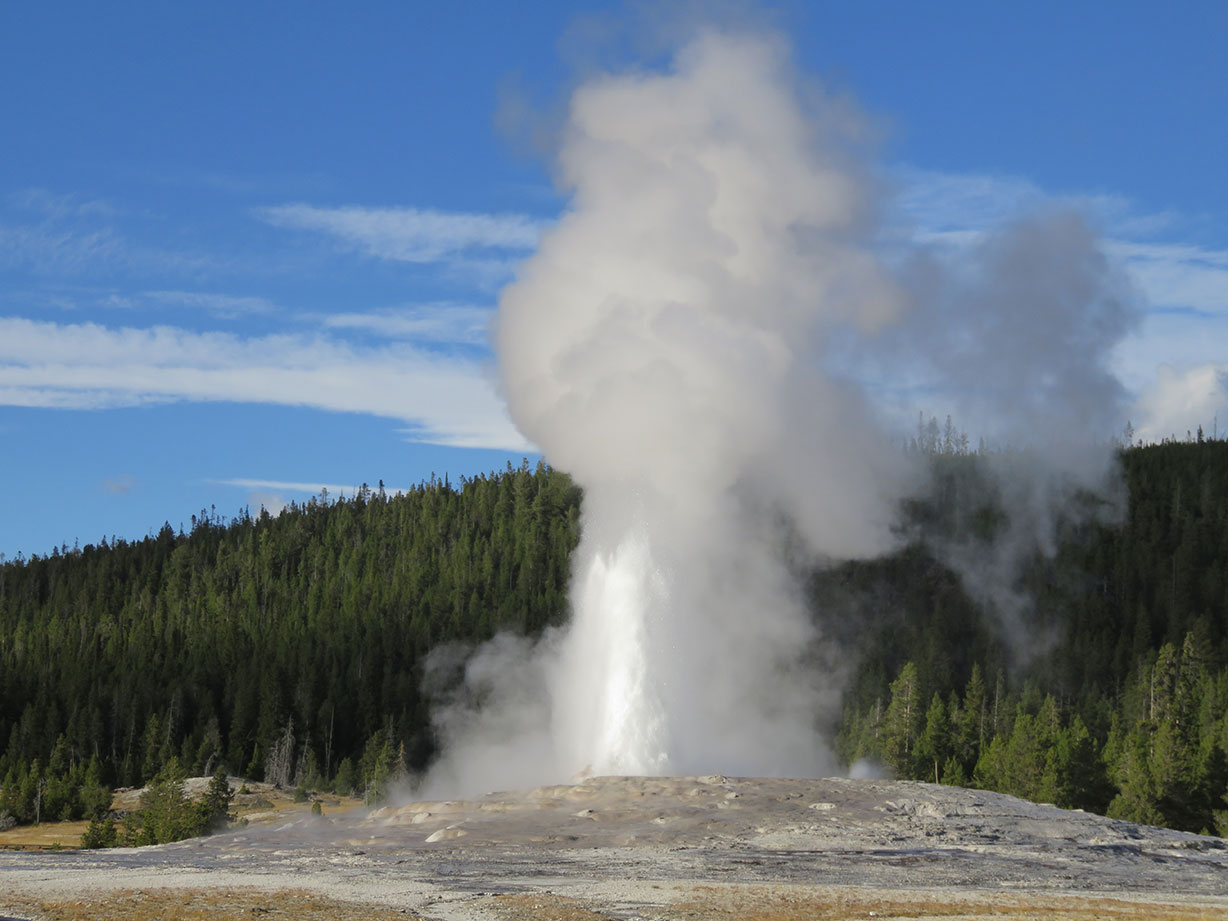
10. Yellowstone National Park Is Bigger Than Two States In The US
Last up in our 10 facts about Yellowstone National Park is a fact about the sheer size of the site. Consisting of over 2.2 million acres of land and at 3,472 square miles, Yellowstone Park is bigger than both Rhode Island and Delaware put together. Surprisingly, it is not the largest National Park in America – this title belongs to Wrangle-St. Elias in Alaska which is over 8 million acres!
Bear Safety
If you’re planning on camping during your stay at Yellowstone, there are a few precautions you’ll have to take to keep safe from grizzlies. The most important tip is to lock up anything with a scent, so this includes any: food, cooking equipment, crumbs and toiletries. Most campsites have designated bear boxes, but you could lock them in your car if there isn’t one available.
And there we have it, 10 interesting facts about Yellowstone National Park. If you’re heading there any time soon, be sure to get stocked up on all the men’s outdoor clothing and women’s outdoor clothing you need, so you can be fully equipped for exploring.
